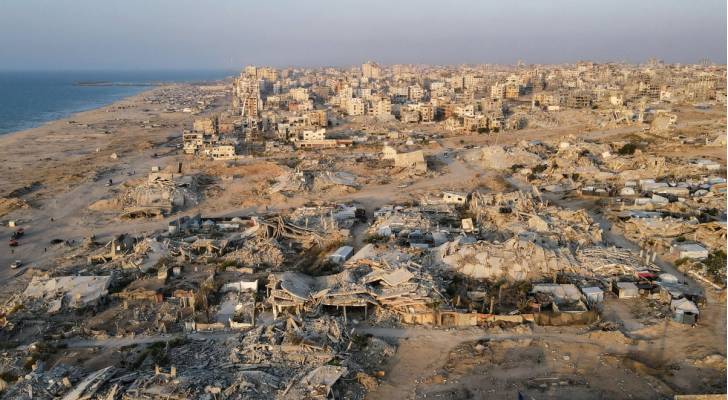Destroyed buildings in Gaza City's Al-Remal neighbourhood (Credit: AFP)
Clearing Gaza of unexploded ordnance could take decades, experts warn
- Clearing unexploded ordnance from Gaza could take 20–30 years, described as a “horrific, unmapped minefield.”
- Over 53 deaths and hundreds of injuries were recorded from leftover explosives, likely a major underestimate.
Removing unexploded ordnance from Gaza’s rubble-strewn streets could take 20 to 30 years, according to Nick Orr, an explosive ordnance disposal expert with humanitarian group Humanity & Inclusion. He described the territory as a “horrific, unmapped minefield.”
The U.N.-led database records over 53 deaths and hundreds of injuries from leftover explosives since the two-year Israeli Occupation genocide on Gaza, though aid groups believe the actual figures are far higher.
A US-brokered ceasefire earlier this month has raised hopes that efforts to begin clearing the dangerous remnants could start.
“If you're looking at a full clearance, it's never happening, it's subterranean. We will find it for generations to come,” Orr said, comparing the situation with British cities after World War Two.
“Surface clearance, now that's something that's attainable within a generation, I think 20 to 30 years. It’s going to be a very small chipping away at a very big problem.”
Orr, who visited Gaza several times during the genocide, is part of a seven-person team set to start identifying explosive remnants near essential infrastructure such as hospitals and bakeries next week.
For now, however, aid organizations have not received blanket permission from 'Israeli' authorities to remove or destroy ordnance or to import the necessary equipment. COGAT, the 'Israeli' military body responsible for overseeing Gaza aid, did not immediately respond to requests for comment. The agency restricts items deemed “dual use,” meaning they could serve both civilian and military purposes.
Humanitarian teams are seeking authorization to bring in equipment that can neutralize explosives by burning them rather than detonating, a method intended to prevent materials from being repurposed by armed groups.
“If there is going to be any kind of future inside of Gaza, there needs to be an enabling security force that allows humanitarians to work,” Orr said, voicing support for provisions in the 20-point ceasefire plan that envision a temporary security presence.
Aid experts warn that even with clearance efforts, Gaza will remain perilous for generations due to the sheer scale of unexploded ordnance buried beneath millions of tons of rubble.




